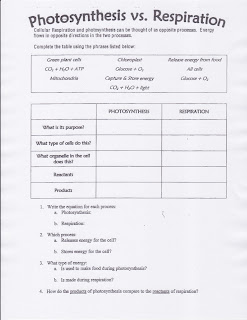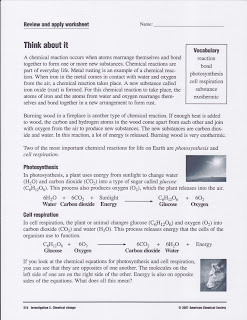ESSENTIAL QUESTION: How are photosynthesis and cellular respiration related?
RELEVANCE: I owe my life to a plant!
NGSSS: SC.912.L.18.9; MAFS.912.N-Q.1.1; LAFS.910.SL.1.1
LEARNING OBJECTIVES: Students will be able to:
-explain how the products of photosynthesis are used as reactants for cellular respiration and vice versa.
-explain how photosynthesis stores energy in organic compounds and cellular respiration releases energy from organic compounds.
-identify the reactants, products, and/or basic function of photosynthesis, aerobic and anaerobic cellular respiration.
-connect the role of ATP to energy transfers within the cell.
-continue Journey To Mars Project.
-set up and explain Million Orchid Project
BELL RINGER - read over lab handout and discuss safety precautions
VOCABULARY: autotroph, photosynthesis, heterotroph, ATP, aerobic respiration, anaerobic respiration, chloroplast, mitochondria
HOME LEARNING: Biology report on the cell
AGENDA
WHOLE GROUP
We reviewed class correlations and tie-ins to the focus calendar.
Students performed the cellular respiration lab.
The remaining time was spent working on the biology report, which can be found below It is due in class by Friday, 5 February.
These are the instructions on how to write your cell report. Be careful to follow them. Check your work before submitting.
SMALL GROUP/INDEPENDENT PRACTICE/DI
Students who complete work early should go to Edgenuity and work on assigned topics.
HOTS:
-Which process (photosynthesis or cellular respiration) do you think began first on earth? Explain your answer.
-Describe how a planet like Mars could be terraformed because of the process of photosynthesis.
EXIT STRATEGY:
Three things I learned, two things I found interesting, one question I still have.














